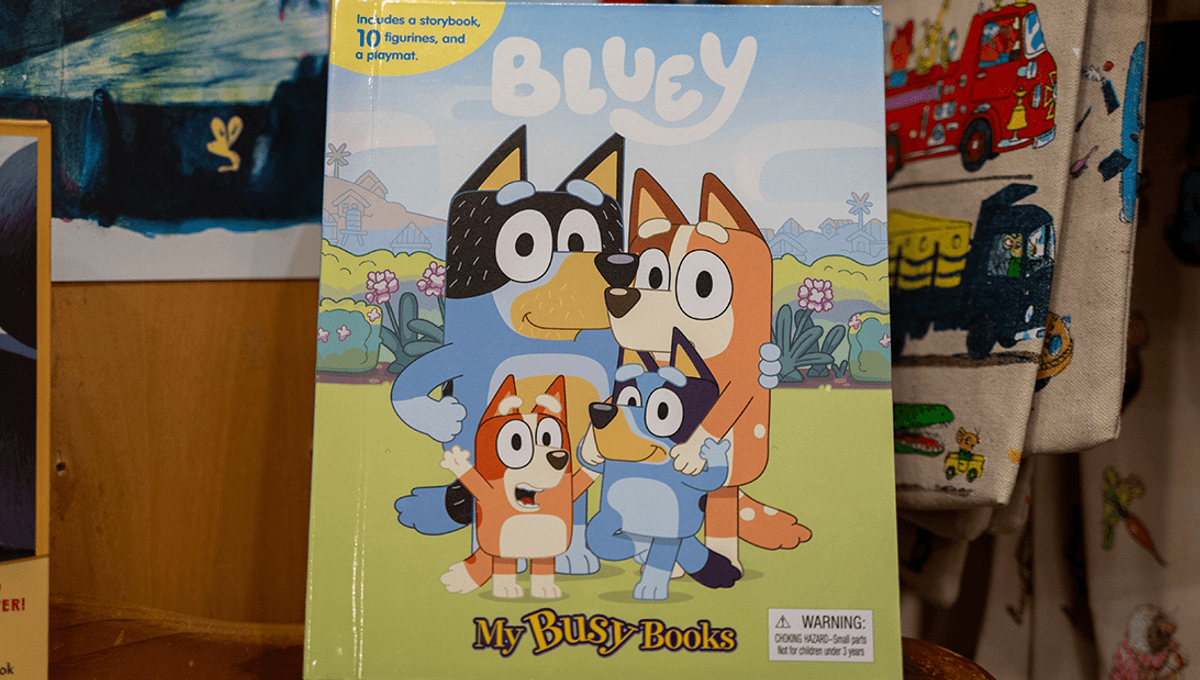New Study Finds Evidence For What Every Parent Knows About Bluey

New Study Finds Evidence For What Every Parent Knows About Bluey
A group of researchers have watched every episode of the hit children's cartoon Bluey, finding evidence for what most parents will tell you about the show against your will.
The rest of this article is behind a paywall. Please sign in or subscribe to access the full content. Bluey, for those of you who aren't of parent or child age, is an Australian cartoon about a family of dogs living in a version of Brisbane, Queensland, populated by other cartoon dogs. While kids seem to love it for the quirky and funny characters, parents (full disclosure, I've probably sat through every Bluey episode with my own children) are pretty keen on it too. As well as being one of the more watchable children's programs for adults, with Bandit and Chilli dealing with familiar parenting problems, the show is known for how well it deals with children's issues, and teaches them about coping with setbacks, challenges, and disappointments that life will inevitably throw their way. In a new study, researchers from CQUniversity watched seasons 1-3 of the cartoon in an attempt to learn how resilience, or the ability to cope with challenges, can be fostered through storytelling. The researchers used the Grotberg Resilience Framework, which identifies three different types of resilience: "I am", "I have", and "I can". "The 'I AM' aspect focuses on an individual’s sense of self, including their strengths, values, and self-worth. It highlights personal qualities such as optimism, confidence, and emotional regulation, which help individuals cope with and navigate challenging situations," the team explains in their paper. "The 'I HAVE' aspect emphasises the external resources and support systems available to a person, such as family, friends, and community. These relationships provide care, value, and understanding, all of which contribute to building resilience. The 'I CAN' aspect focuses on an individual’s ability to cope with adversity through practical skills like problem-solving, emotional regulation, decision-making, and coping strategies." The team went through every episode, noting down when each type of resilience was a theme in the story, as well as other themes. "For example in The Show (season two episode 19), Bingo accidentally drops a breakfast tray and bursts into tears. Mum gently models emotional coaching explaining her coping process: 'I have a little cry, I pick myself up, dust myself off, and keep going.' Research shows that when caregivers model how to acknowledge distress, express feelings, and then recover with calm, children gradually learn to manage negative emotions effectively," study author Bradley Smith, a senior lecturer in psychology at CQUniversity Australia, explains in a piece for The Conversation. "Later in the episode, Bingo repeats those exact words when things go wrong again." Another moment of resilience identified by the researchers, in which the kids react to their balloon getting popped. While resilience was found not to be the most prominent theme of Bluey (for that, check out Bing, about a rabbit cursed to make horrific mistakes and learn from them episode after horrifying episode), it did feature very prominently throughout the series. "Half the episodes (48.7%) featured resilience as either a primary or secondary theme. Primary themes included creative play (30.0.%) and resilience (27.3%)," the team explains. "Bluey, the main character, featured in 54.8% of resilience storylines. Parents were the main facilitators (64.4%), with Bluey’s mother being the most common (46.6%)." In total, the team found 73 resilience-containing storylines across the 150 standard episodes viewed, with "I have" resilience being portrayed slightly more than its "I can" and "I am" counterparts. The team believes that these repeated messages of resilience, which are then seen in repeated viewing by children, could help the message sink in and help children build up resilience of their own. As well as this, they suggest that parents should ask questions of their children such as "What do you think Bluey felt then?" to start conversations about the issues raised. "Bluey emphasises the role of family in modelling resilience, with many episodes portraying parental characters scaffolding children’s responses to frustration, disappointment, or conflict," the team concludes. "Our findings suggest that Bluey not only models resilient behaviours in children but also demonstrates how caregivers can actively foster resilience through everyday interactions." The study is published in the journal Educational and Developmental Psychologist.


